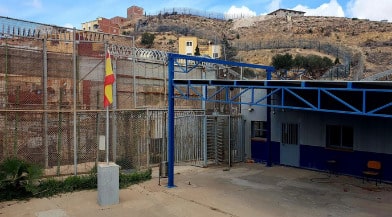Spain has launched an upgraded border crossing at the Melilla border with Morocco, equipped with technology needed for the upcoming EU traveler registration scheme known as the Entry-Exit System (EES).
The checkpoint in the Spanish enclave of Melilla on the North African coast received 11 million euros (US$11.3 million) of investment for the upgrade, according to the Interior Minister Fernando Grande-Marlaska. The investments will enable Spanish border authorities to record not only travel documents but also fingerprint and facial data of non-EU travelers as required by EES.
“Spain has been one of the countries of the European Union that has prepared itself from the outset for the Entry-Exit System,” Minister Grande-Marlaska said according to local news agency Europapress.
Spain has land borders with Morocco in three autonomous territories in North Africa, including Melilla, Ceuta and Peñón de Vélez de la Gomera, an island that is divided from Marocco with the smallest border in the world, measuring only 85 meters (279 ft).
The country has also been installing a biometric border system in the city of Ceuta. Spain struck a deal in June with Thales and a partner to deploy 1,500 biometric terminals at various border crossings.
The EES is expected to launch in 2025, but there is currently no official launch date. The EU has opted for a phased approach to the biometric border scheme.
Article: Spain finishes EES upgrade at Melilla border crossing
